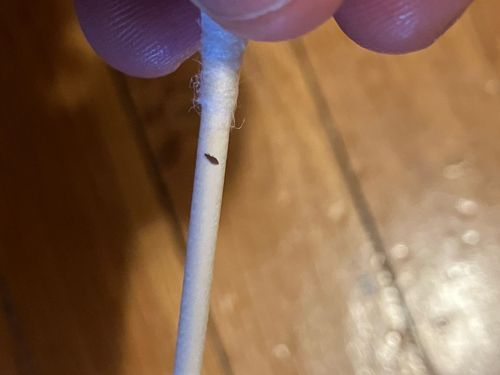Flea
Scientific Name: Siphonaptera (order), various species
Order & Family: Order Siphonaptera, various families (e.g., Pulicidae)
Size: 1.5 to 3.3 mm (0.06 to 0.13 inches) long

Natural Habitat
Typically found on warm-blooded animals such as mammals and birds, as well as in their nests, bedding, carpets, and cracks in floors.
Diet & Feeding
Adult fleas are obligate hematophagous parasites, meaning they feed exclusively on the blood of their hosts. Larvae feed on organic debris, including adult flea feces (digested blood).
Behavior Patterns
Fleas are known for their remarkable jumping ability. They have a four-stage life cycle: egg, larva, pupa, and adult. The entire life cycle can range from a few weeks to several months depending on environmental conditions (temperature, humidity, presence of a host). They are fast-moving and can be difficult to catch due to their small size and ability to quickly hide within fur or carpet fibers. They tend to be most active when a host is present.
Risks & Benefits
Potential risks include causing itchy bites, allergic reactions (flea allergy dermatitis), and transmitting various diseases to humans and animals, such as murine typhus and plague (though rare in developed countries primarily associated with rat fleas). They can also transmit tapeworms to pets. There are no known direct benefits to humans, though they play a minor role in the ecosystem as food for other insects and aiding in decomposition as larvae.
Identified on: 9/17/2025